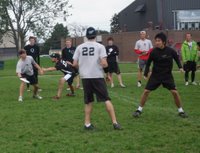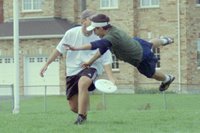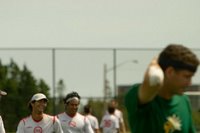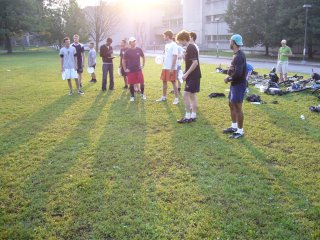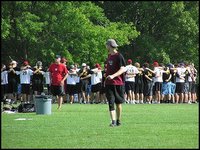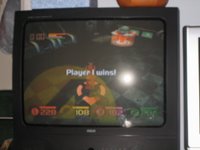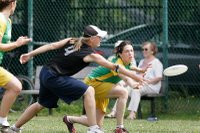Hey Folks,
Now that "The Cultimate Opinion" has been around for three months, I'd like to give some stats and reflections about who reads this blog, what is read, and some interesting stats.
The biggest success so far is the "The Cultimate Opinion" is listed at Ultimate Talk. Unfortunately, it's not part of the feed since I post too many articles and would overwhelm the feed. Still, just being listed means that the blog has become part of the Ultimate Blog community. Additionally, I've had many e-mails and personal comments about the blog.
The biggest influence the blog has had on Ultimate is the brick. I think I've convinced many people to rethink the brick and have heard anecdotal evidence about league and tournaments sticking with the 20 yards. Great!! Now we all need to learn how to pull.
The addition of Poll Thursday has been a great success for many of us. It's a fun little concept that gives us a chance to vote for teams we favour and ideas we like. I encourage readers to suggest polls as they want.
Also, adding pictures to the blog makes visiting the page much more enjoyable. Unfortunately, my photos are biased to my teams, but I would like to post a variety of Ultimate pictures from throughout the continent and world. The only way to do that is for some of our U.S. and world readers to send in some Ultimate photos.
Now to the statistics:
- This is the 50th article in the series.
- I have 40 draft posts with 21 of them completely written. At the current release rate that will last us until the first week of December.
- About 100 visits a day with Monday being the peak day (about 150 visits).
- 1119 regular readers (defined as have come to the Blog more than 15 times).
- 3500 different people (computers) have visited the blog once.
- Top three countries: 64% from Canada, 32% from U.S., and 0.5% from Australia.
- Visits from all continents (not including Antarctica).
- Top networks: 15% Rogers, 12% University of Toronto, and 6% Comcast.
- Top referrers: 33% google.groups, 20% tuc.org, and 15% direct links.
- Times: 223 of you stayed 1 to 2 minutes, 315 stay 3 to 10 minutes, 176 stay 10 to 20 minutes, and 27 of you spent more than 20 minutes on one visit.
- Browser: 43% Internet Explorer, 41% Firefox, and 10% Safari.
- Add revenue is at: $3.40. We could almost fund one century club badge.
- Add content is mainly disc related now instead of hockey and football drills.
- Main commentors are Tom, Warren, and Norm (all Toronto Boys).
PJ

